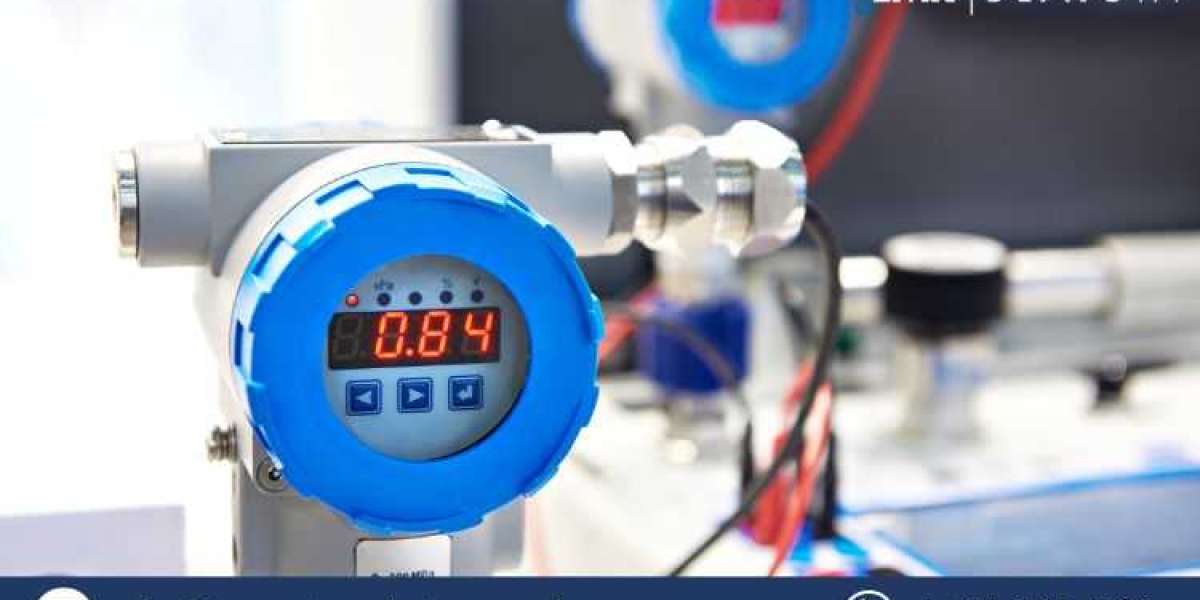The global gas sensor market size is a rapidly expanding sector, driven by increasing environmental awareness and stringent safety regulations across various industries. The market reached an estimated value of USD 1,026.98 million in 2023 and is expected to grow at a CAGR of 6.6% from 2024 to 2032, reaching nearly USD 1,826.45 million by 2032. Gas sensors play a critical role in monitoring and detecting harmful gases in industrial, commercial, and residential environments, making them essential in today’s safety-conscious world.
Market Outlook
Gas sensors are widely used in industrial safety, environmental monitoring, healthcare, and building automation. They detect and measure gas concentration levels, helping prevent hazardous situations caused by gas leaks or toxic emissions. The increasing adoption of gas sensors is driven by environmental policies, growing awareness of air quality, and the demand for smarter buildings. With advancements in sensor technology, including miniaturization and improved sensitivity, gas sensors are becoming more reliable and accessible across various industries.
Report Overview
This report provides a comprehensive analysis of the global gas sensor market, covering essential aspects such as market size, growth dynamics, segmentation, challenges, and recent trends. It also highlights major industry players and their roles in shaping the gas sensor landscape.
Market Size
The global gas sensor market achieved a value of USD 1,026.98 million in 2023 and is expected to grow at a CAGR of 6.6% from 2024 to 2032, projected to reach approximately USD 1,826.45 million by 2032. This growth trajectory reflects the increasing need for advanced gas monitoring solutions in industrial, environmental, and consumer applications.
Market Dynamics
Market Drivers
Stringent Environmental and Safety Regulations: Governments worldwide are enforcing regulations on industrial emissions and air quality, driving demand for gas sensors that monitor pollutants and hazardous gases.
Growing Demand for Industrial Safety: Gas sensors play a critical role in preventing gas leaks and hazardous exposures in manufacturing, oil and gas, mining, and other industries, creating a high demand for reliable gas detection systems.
Increased Focus on Air Quality Monitoring: With rising public awareness around health and air quality, gas sensors are increasingly used in air quality monitors for indoor and outdoor environments. This trend is particularly strong in urban areas and developed regions.
Technological Advancements in Sensor Design: Recent advancements, including miniaturization, improved accuracy, and wireless connectivity, have made gas sensors more effective and suitable for a variety of applications, from industrial settings to wearable devices.
Key Market Challenges
High Costs of Advanced Gas Sensors: Advanced gas sensors, particularly those with enhanced sensitivity or multiple gas detection capabilities, can be expensive, limiting their adoption in cost-sensitive applications.
Complex Installation and Maintenance Requirements: Gas sensors require careful installation and regular maintenance to function effectively, which can pose challenges for industries with limited resources or technical expertise.
Segmentation
The global gas sensor market can be segmented based on:
Type of Gas Detection:
- Oxygen (O2)
- Carbon Dioxide (CO2)
- Carbon Monoxide (CO)
- Nitrogen Oxides (NOx)
- Sulfur Dioxide (SO2)
- Ammonia (NH3)
- Methane (CH4)
Technology:
- Electrochemical Sensors
- Infrared Sensors
- Semiconductor Sensors
- Catalytic Sensors
- Photoionization Detectors
Application:
- Industrial Safety
- Environmental Monitoring
- Healthcare
- Building Automation
- Consumer Electronics
End-User:
- Oil Gas
- Chemicals and Petrochemicals
- Healthcare Facilities
- Smart Buildings and Homes
- Mining
Region:
- North America
- Europe
- Asia-Pacific
- Latin America
- Middle East and Africa
Recent Developments
Recent innovations in the gas sensor market focus on improving sensor accuracy, sensitivity, and connectivity. Leading companies are developing multi-gas sensors that can detect multiple gas types simultaneously, enhancing efficiency and reducing costs. Additionally, IoT-enabled gas sensors are gaining popularity, providing real-time monitoring capabilities and remote data access. These advancements are contributing to safer and smarter environments across various sectors.
Component Insights
Technology Insights
Electrochemical sensors are among the most widely used gas sensor types, particularly for detecting toxic gases like carbon monoxide and nitrogen dioxide. Infrared sensors, on the other hand, are favored in industrial applications for detecting combustible gases. Technological advancements in semiconductor sensors and photoionization detectors are expanding their applications in consumer electronics and air quality monitoring systems.
End-User Insights
The industrial safety sector represents the largest share of the gas sensor market, with significant demand from oil and gas, chemical, and mining industries. The healthcare sector also uses gas sensors to monitor patient safety, particularly in respiratory equipment and hospital air quality systems.
Regional Insights
North America: North America holds a significant share of the global gas sensor market due to strict environmental regulations and high industrial safety standards in the U.S. and Canada.
Europe: Europe has a mature gas sensor market, with strong demand from environmental monitoring and healthcare applications. The region's stringent emissions regulations support the adoption of advanced gas sensors.
Asia-Pacific: Asia-Pacific is expected to witness the highest growth rate, driven by rapid industrialization, urbanization, and increasing awareness of air quality issues in countries like China and India.
Key Players
Prominent players in the global gas sensor market include:
- Amphenol Corporation
- Alphasense, Inc.
- Dynament Limited
- Gastec Corporation
- Honeywell International Inc.
These companies are focusing on product innovation, expanding their market reach, and enhancing sensor capabilities to meet the growing demand for reliable gas detection systems.
Market Trends
Key trends in the gas sensor market include the rise of IoT-enabled and wireless gas sensors, advancements in multi-gas detection capabilities, and a growing emphasis on sustainable manufacturing practices. Additionally, the demand for portable and wearable gas sensors is increasing, driven by applications in personal air quality monitoring and healthcare.
FAQs
What is the projected growth rate of the global gas sensor market?
The market is expected to grow at a CAGR of 6.6% between 2024 and 2032.
What are the main drivers of growth in the gas sensor market?
Key drivers include stringent environmental and safety regulations, rising demand for industrial safety, and increased focus on air quality monitoring.
What challenges does the gas sensor market face?
Challenges include the high costs of advanced sensors and the complex installation and maintenance requirements.
Which regions are expected to see significant growth in the gas sensor market?
North America, Europe, and Asia-Pacific are expected to experience substantial growth, with Asia-Pacific projected to have the highest growth rate.
Who are the major players in the global gas sensor market?
Key players include Amphenol Corporation, Alphasense, Inc., Dynament Limited, Gastec Corporation, and Honeywell International Inc.
Why are IoT-enabled gas sensors becoming popular?
IoT-enabled gas sensors provide real-time monitoring, remote access to data, and enhanced safety features, making them highly effective for various industrial and consumer applications.








